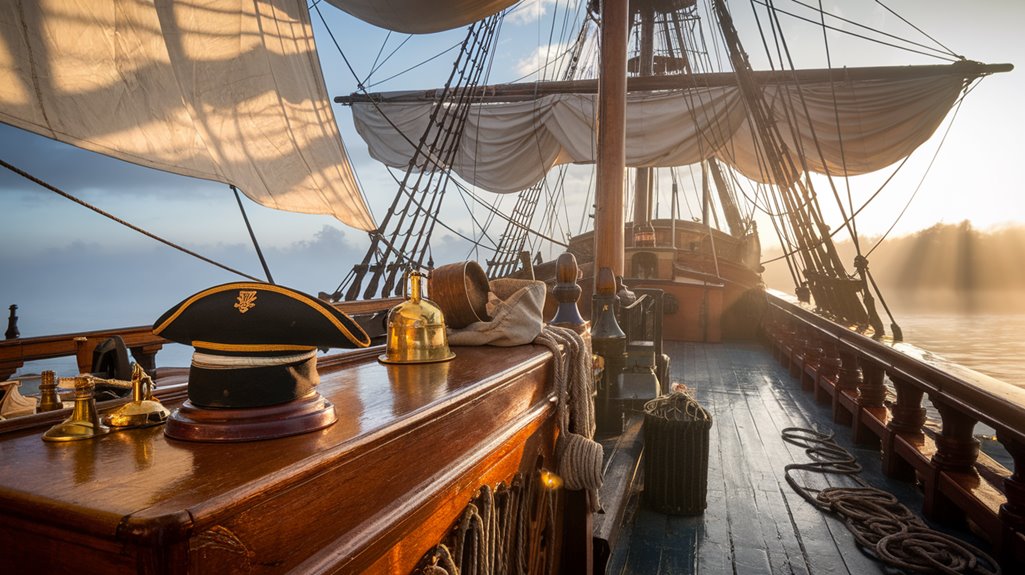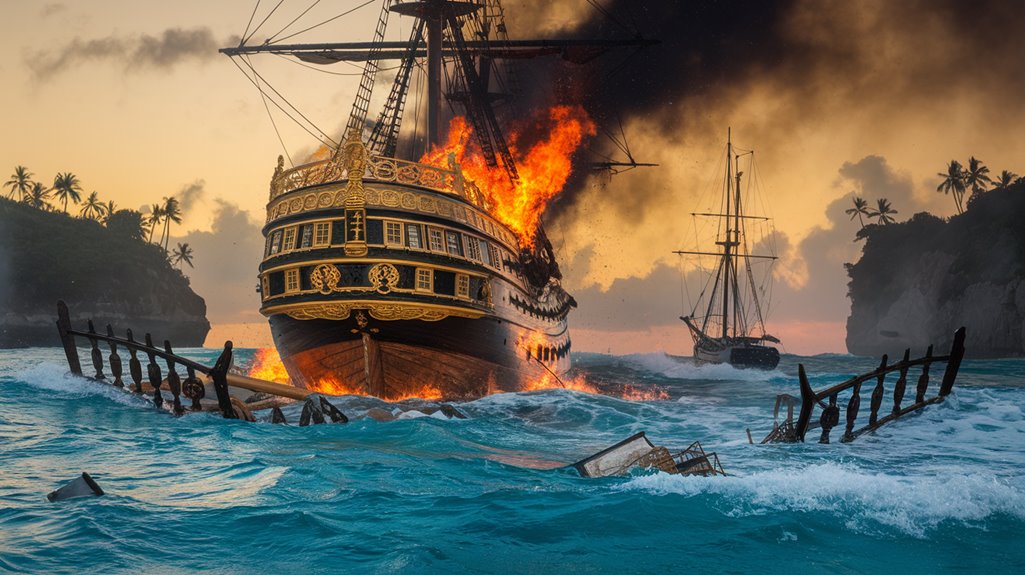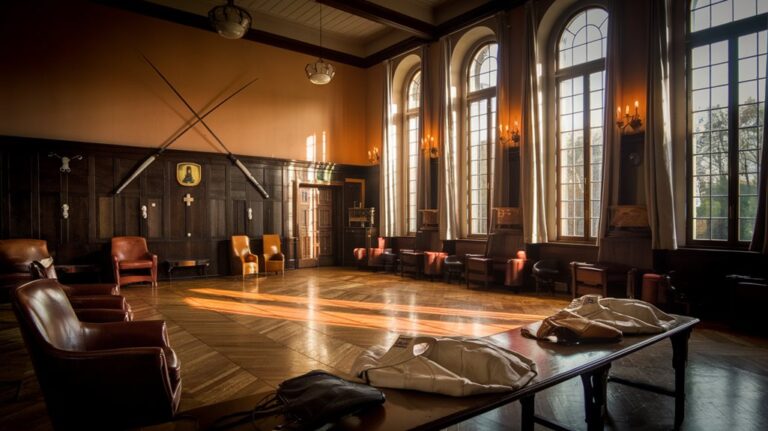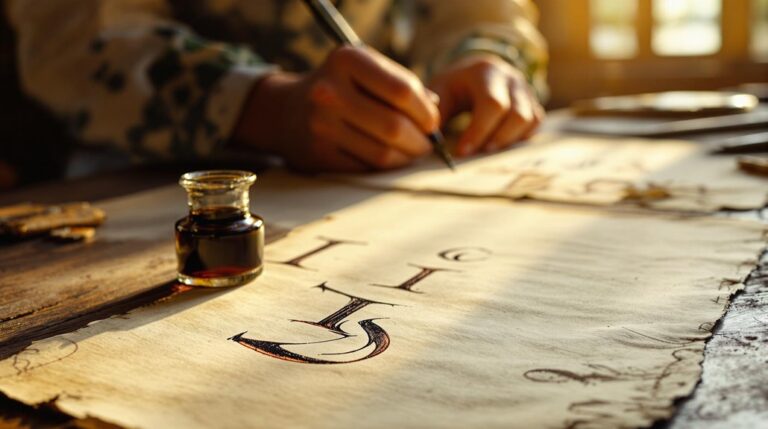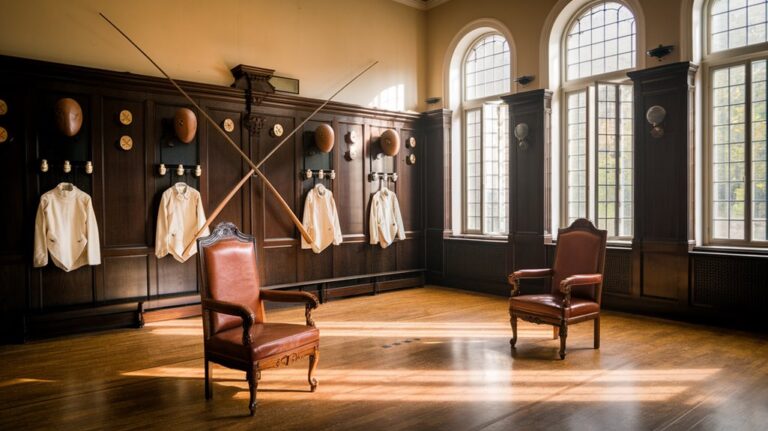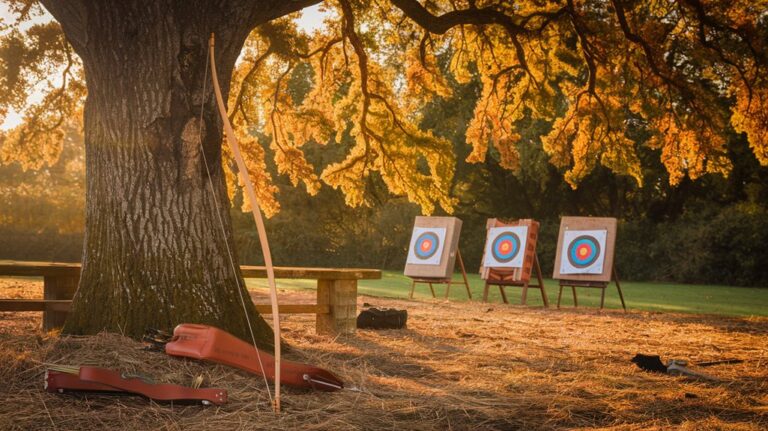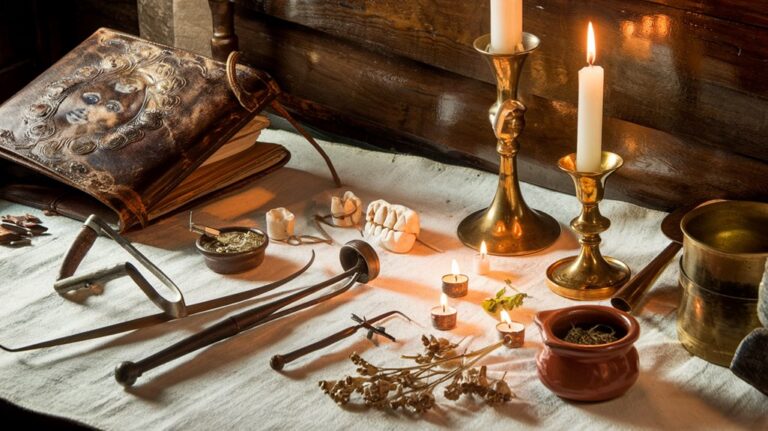Captain Morgan Was Based on a Real Privateer
You might find it surprising that the smiling face on your favorite rum bottle belongs to one of history's most successful privateers. Sir Henry Morgan wasn't just a marketing creation – he was a real Welsh sailor who became the scourge of the Spanish Caribbean in the 1600s. His raids brought him incredible wealth, a knighthood, and eventually the position of Lieutenant Governor of Jamaica. There's much more to this fascinating character than his modern spirits-selling persona suggests.
The Welsh Origins of a Caribbean Legend
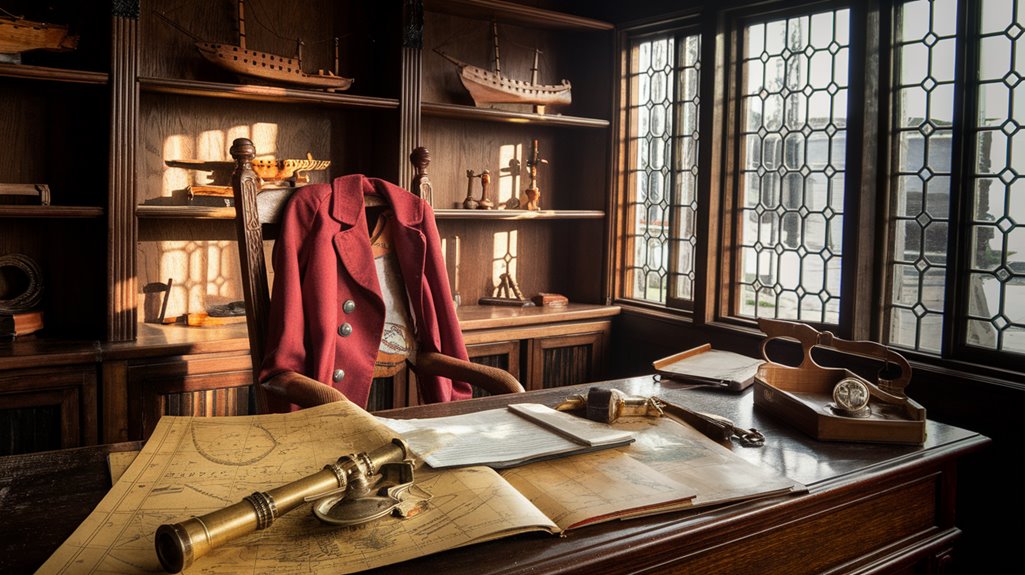
While Hollywood has romanticized Captain Morgan as a swashbuckling Caribbean legend, his story actually begins in the quiet Welsh countryside.
You'll find his roots in Llanrhymny, Monmouthshire, where he was born around 1635 to what's believed to be a prosperous farming family.
Beyond his Welsh heritage, much of Morgan's early life remains shrouded in mystery.
You might be surprised to learn that even his journey to the Caribbean has multiple possible origin stories. He may have sailed with Robert Venables' army in 1654, traveled as an apprentice cutler, or been forcibly "barbadosed" to work as an indentured servant.
While these details remain uncertain, what's clear is that this Welsh farmer's son would eventually transform into one of history's most notorious Caribbean legends through his privateering exploits.
His reputation grew so formidable that when he attacked Panama City in 1671, the city fell largely because the defenders were paralyzed by fear of his name.
Later in his career, he became an official representative of the English crown when he joined the Brethren of the Coast.
From Sailor to Licensed Privateer
Young Morgan's journey from Welsh farmland to Caribbean waters marked the beginning of an extraordinary career in privateering. Under maritime law, he'd learn the ropes from experienced mentor Sir Christopher Myngs, who taught him the intricacies of naval warfare and privateering strategies.
Born in Llanrhymny, Wales, Morgan would later establish himself as one of history's most successful privateers.
As a licensed privateer, Morgan operated with the British government's blessing through privateer contracts that allowed him to raid Spanish ships and settlements. His remarkable leadership skills led him to become elected captain at 23, commanding hundreds of loyal crew members.
He joined the Brethren of the Coast, a democratic organization of over 1,500 privateers who followed a strict code of conduct. You'd find their agreements fascinating – they included specific compensation terms, like 150 Spanish gold coins per mission and injury bonuses ranging from 100 to 600 pieces of eight.
The Infamous Raids That Built His Fortune
After receiving his first command, Morgan orchestrated a series of daring raids that would cement his reputation as the Caribbean's most successful privateer.
You won't find treasure maps among his tactics – instead, he relied on military precision and strategic genius to target Spanish strongholds like Panama City and Lake Maracaibo.
His most impressive feat of naval warfare came when he assembled a fleet of 36 ships and nearly 2,000 men to sack Panama City. The attack forced Spanish colonists to transport their gold through the Chagres River route, marking a significant shift in trade patterns.
Before the assault, he captured Fort San Lorenzo to secure his path. The expedition officially kicked off on December 16, 1670, when Morgan began his advance.
At Lake Maracaibo, he outsmarted Spanish forces by using a fire ship to break through their blockade.
Though his raids created tension between England and Spain, they earned him vast wealth, approximately 3,000 prisoners, and eventually, a knighthood from the English Crown.
Battle Tactics and Military Strategies
Throughout his campaigns, Captain Morgan demonstrated military brilliance through a combination of innovative tactics and strategic maneuvers that consistently outmaneuvered his Spanish adversaries.
His mastery of maneuver warfare enabled him to avoid direct confrontations while exploiting enemy weaknesses through rapid, flexible movements.
You'll find his tactical deception particularly remarkable – he'd disguise captured ships, use the environment to his advantage, and create diversions that confused Spanish forces. His strategic genius was evident when he organized his men into four battle squadrons to face Spanish militia in Panama. As a Welsh privateer, he brought extensive maritime experience to his role defending British interests.
In Panama, he utilized the terrain masterfully, using low ground and natural cover for flanking maneuvers.
He'd maintain a faster operational tempo than his enemies, while employing local guides to navigate challenging territories.
Morgan's unconventional methods, like turning a captured vessel into a floating bomb, showcased his ability to adapt and innovate when facing fortified Spanish positions.
His Rise to Power in Jamaica
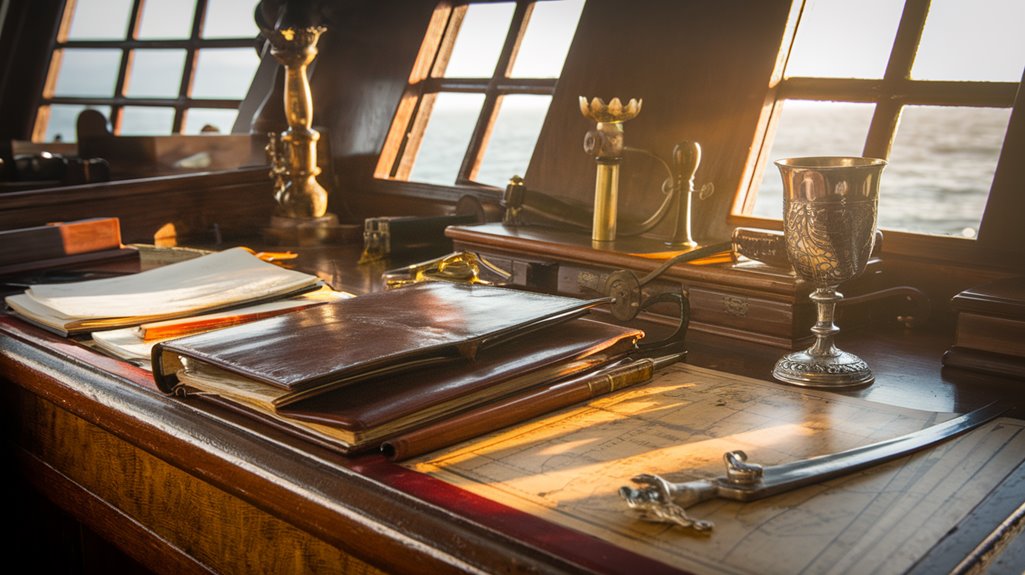
In 1655, Captain Morgan's remarkable journey to power began when he first set foot on Jamaican soil during England's occupation of the island.
Through his privateering tactics under Captain Christopher Myngs, he quickly learned the art of naval warfare and colonial conquest.
His rise to prominence followed three key milestones:
- Earning his first command of a privateering vessel in 1662, where he proved his tactical prowess
- Leading successful raids against Spanish colonies, including the lucrative captures of Puerto Príncipe and Portobelo
- Ascending to colonial governance as Lieutenant Governor of Jamaica in 1674
You'll find it fascinating that Morgan's transformation from privateer to political leader showcased his adaptability.
He leveraged his military success to secure a position in Jamaica's Assembly, where he'd eventually serve as acting governor three times. His status grew further after King Charles II knighted him in recognition of his service to the crown. Morgan's influence wasn't without controversy, as he faced political attacks from his rival Thomas Lynch.
 Captain Blood starring Errol Flynn brought Morgan's swashbuckling story to the silver screen.
Captain Blood starring Errol Flynn brought Morgan's swashbuckling story to the silver screen.
You'll even discover his name gracing hotels and resorts throughout the Caribbean.
Morgan's strategic brilliance and daring raids have transformed him into an enduring symbol of the privateer era, ensuring his place in both historical studies and popular culture.
His reputation as El Draque among Spanish forces cemented his status as a legendary figure whose influence persists to this day.

